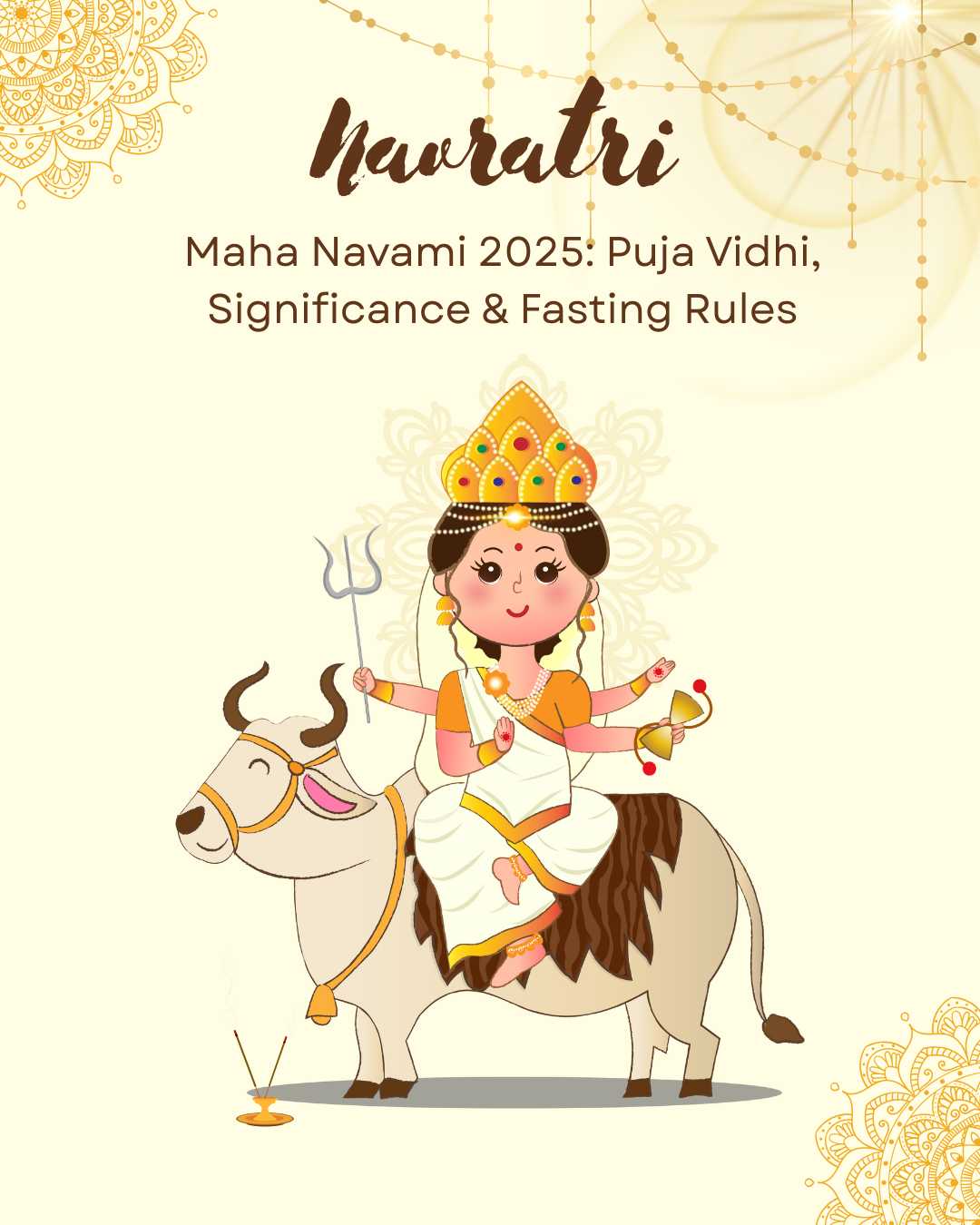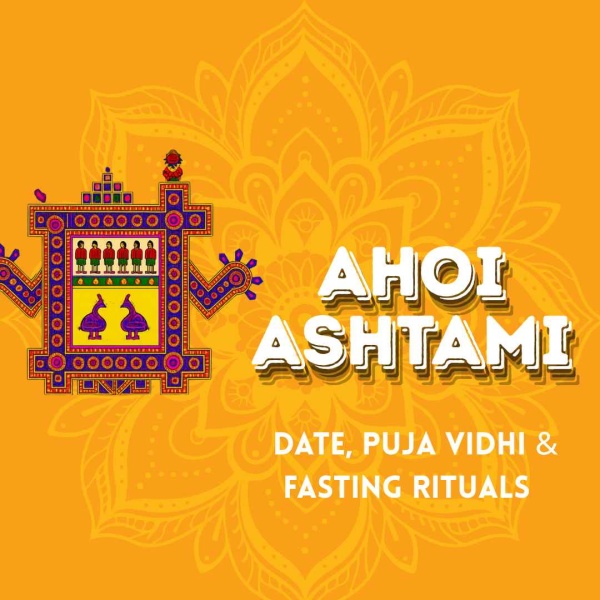Maha Navami 2025 falls on October 1, 2025, and marks the ninth and penultimate day of the sacred Navratri festival. Devotees observe great spiritual significance on this day as they celebrate Goddess Durga’s final victory over the demon Mahishasura, symbolizing the ultimate triumph of good over evil. The celebrations of Durga Puja and Dussehra (Vijayadashami) intimately include Maha Navami as a critical climax and transition within the festive period.
Also read- Festival in October 2025: Complete List of Hindu Festivals
Overview and Spiritual Significance of Maha Navami
Maha Navami, the ninth day of Navratri, honors Goddess Durga who embodies Shakti—the cosmic divine feminine energy. On this day, devotees worship Durga as Mahishasuramardini, the fierce goddess who destroys the buffalo demon Mahishasura, representing the eradication of evil, ego, and ignorance.
The day signifies:
- The last phase of the goddess’s battle against negative forces distinctly highlights the power of virtue, bravery, and spiritual discipline, ultimately leading to the restoration of cosmic balance and righteousness.
- The embodiment of Shakti, showcasing the courage and determination needed to overcome internal and external obstacles.
- The spiritual preparation for Vijayadashami (Dussehra) involves reflecting on when Lord Rama famously slays Ravana, thereby celebrating the ultimate victory of good over evil.
- The honoring of Goddess Saraswati, the deity of wisdom, knowledge, and arts, emphasizing knowledge’s triumph over ignorance.
Maha Navami Puja Vidhi and Rituals
Devotees perform sacred rituals combining devotional worship, symbolic acts, and spiritual discipline. The key puja practices include:
Maha Navami Puja Vidhi and Rituals
Devotees take a ritual vow to observe Maha Navami with full devotion and discipline, aligning their mental and spiritual focus.
Kalash Sthapana (Installation of Sacred Pot)
Devotees install a Kalash (sacred pot) filled with holy water and mango leaves as a symbol of Goddess Durga’s presence, decorating it with red cloth and turmeric while praying for purification.
Ganesh Puja
Devotees worship Lord Ganesha, chanting mantras and offering sweets like modak to remove obstacles.
Navagraha Puja
The nine planets receive worship to seek their favorable influence
Durga Archana and Recitation
Furthermore, devotees offer red flowers, incense, coconut, banana, fruits, and halwa while chanting hymns such as Durga Saptashati, Mahishasura Mardini Stotra, or Devi Kavach; subsequently, they perform aarti to invoke the goddess’s blessings.
Sandhi Puja (Critical Puja at Sandhi-Kalam)
At the transition between Ashtami and Navami tithis, for about 48 minutes, devotees offer 108 lotuses and light 108 lamps, commemorating Durga’s victorious slaying of Mahishasura. This ritual stands as one of the most powerful parts of Navratri.
Kanya Puja (Worship of Young Girls)
Devotees honor nine young girls under age 11, symbolizing nine forms of Goddess Durga. They wash the girls’ feet, apply kumkum, offer traditional prasad like puri, halwa, and kala chana, and present gifts or clothes as a tribute to feminine divinity.
Ayudha Puja (Weapon and Tool Worship)
Especially in South India, devotees clean, decorate, and worship tools, books, vehicles, and instruments to seek blessings for success, marking an auspicious start to new endeavors ahead of Vijayadashami.
Maha Homa (Sacred Fire Ritual)
Devotees light a sacred fire (havan), offering ghee, sandalwood, and herbs while chanting mantras. The homa purifies the environment and symbolizes destroying evil tendencies. Sometimes, symbolic sacrifices like pumpkin represent slaying the ego.
Aarti and Conclusion
Devotees conclude the puja with devotional songs and aarti, inviting eternal protection and grace from the goddess, before distributing prasad.
Maha Navami Fasting Rules (Vrat Vidhi)
Fasting on Maha Navami varies by region and personal preference; however, it centers on spiritual discipline and purification. Many devotees strictly avoid grains, salt, and heavy foods, consuming only fruits, milk, and vrat foods like sabudana (tapioca pearls) or kuttu (buckwheat) preparations. Some undertake water-only fasts. Devotees typically break the fast after the puja and agnihotra (fire ritual) with prasad. Observing this fast pleases Goddess Durga and brings blessings of strength, prosperity, and spiritual growth.
Regional Variations and Cultural Significance
- Eastern India (West Bengal, Odisha, Assam)
The community performs Shodashopachara Puja (16-step ritual) to worship Durga. Devotees gather in grand numbers to honor the goddess. Celebrations include cultural dances such as Garba and Dandiya especially in Gujarat and Maharashtra, adding vibrancy. Eastern India begins preparations for the immersion (Visarjan) of the goddess’s idol, marking the conclusion of Durga Puja. Devotional chants, music, and incense fill temples and homes, creating a spiritual yet joyous atmosphere. - Northern India
Kanya Puja takes precedence. Devotees honor young girls as living goddesses, serving halwa, puris, and black chickpeas. - Southern India
Ayudha Puja holds prominence, with worship of tools, weapons, books, and vehicles. Some regions begin children’s schooling ceremonies. Telangana celebrates Batukamma, where women prepare and offer floral arrangements to the goddess, honoring womanhood.
Symbolism and Mantras for Maha Navami
Devotees chant Durga Saptashati or Devi Mahatmyam, considered highly auspicious. Popular mantras include “Om Hreem Durgaay Namah” and Mahishasura Mardini Stotra. Offering 108 lotuses and lighting 108 lamps during Sandhi Puja symbolize spiritual awakening and purification. Worshipping Kanyas reflects respect and adoration for feminine power and nurturing.
Connection to Dussehra (Vijayadashami) and Durga Puja
Devotees prepare through Maha Navami for Vijayadashami, which celebrates the victory of good over evil the next day. Vijayadashami commemorates Lord Rama’s victory over Ravana and continues the theme of moral triumph. Devotees complete their rituals and often commence new ventures blessed by divine feminine energy. Following Maha Navami, Durga Puja concludes with the immersion (Visarjan) ceremony, which solemnly symbolizes the goddess’s return to her celestial abode, marking the end of her divine visit on Earth.
Maha Navami Story and Legends
Maha Navami commemorates the climax of the legendary battle between Goddess Durga and the demon Mahishasura. Hindu mythology explains that Mahishasura gained near invincibility after Lord Brahma granted him a boon preventing any man or god from killing him. Consequently, he terrorized the heavens and earth by shape-shifting between human and buffalo forms. However, the gods created Goddess Durga, who ultimately defeated him, symbolizing the triumph of good over evil and divine feminine power. Empowered, Mahishasura terrorized gods and humans alike. In response, the gods combined their energies to create Goddess Durga, a fierce warrior goddess with ten hands, each wielding celestial weapons.
Mounted on a mighty lion, Durga fought Mahishasura, who could shape-shift between buffalo and human forms. After nine days and nights of fierce battle, Durga pierced Mahishasura’s heart with her trident on Maha Navami, ending his tyranny and restoring cosmic order. Devotees celebrate this victorious day as the triumph of righteousness and divine power. Subsequently, the following day, Vijayadashami, clearly symbolizes the broader victory of good over evil, as highlighted by Lord Rama’s decisive defeat of Ravana.



1 Comment